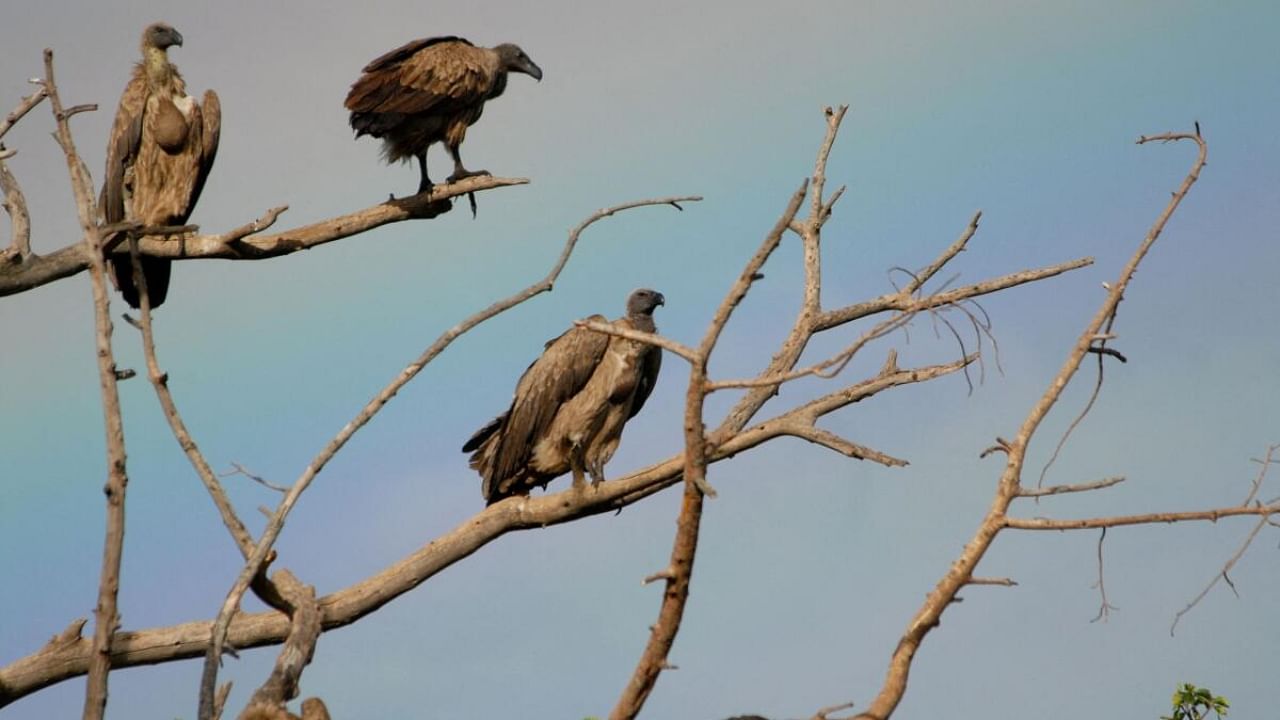
In a mega-initiative, the Maharashtra government has drawn up plans to set up a vulture conservation breeding centre (VCBC) in Trimbakeshwar in Nashik district and release captive-bred vultures in Pench, Tadoba, and Melghat tiger reserves in the Vidarbha region.
The Mumbai-headquartered Bombay Natural History Society (BNHS) is playing a key role in the initiative.
For the last two decades, the BNHS has played a key role in vulture conservation and has set up VCBCs in Pinjore in Haryana, Rajabhatkhowa in West Bengal, Bhopal in Madhya Pradesh and Rani in Assam.
Several other states are also keen on setting up VCBCs.
The three Gyps species - Oriental white-backed vulture (Gyps bengalensis), Slender-billed vulture (Gyps tenuirostris), Long-billed vulture (Gyps indicus) are critically endangered and the conservation is being done by both ex-situ and in-situ methods.
“Maharashtra is set to play a big role in vulture conservation with the setting up of a VCBC, in Anjaneri in Trimbakeshwar in Nashik and released of 20-odd vultures in Melghat, Pench, and Tadoba tiger reserves in the Vidarbha region. This is a comprehensive programme as part of vulture conservation efforts,” said Kishor Rithe, the Secretary and Interim Director, BNHS.
Vultures bred in Haryana and West Bengal have been released in the wild - which signifies the success of the programme.
In fact, after vultures were released in West Bengal, they have started moving out and observed roaming in neighboring countries and states like Nepal, Bhutan and states like Assam and Meghalaya.
“We have been monitoring the released vultures for the last several months, and there has not been any mortality of birds so far due to vulture toxic drugs. It is encouraging that no drug-related deaths have been reported so far, as this may mean that the environment is relatively safe for vultures,” added Rithe.
Vultures in India have faced problems, with one of the main threats being the toxicity of some of the veterinary use of non-steroidal anti-inflammatory drugs (NSAID) on vultures, such as diclofenac. It was in the 1990s that the studies done by BNHS highlighted the drastic decline of vulture populations across India due to diclofenac toxicity. Based on this research, veterinary use of diclofenac was banned in India in 2006. Despite this ban, human-use diclofenac was being used in veterinary treatments. To prevent this misuse, in 2015, the Government of India banned the production of multidose vials of diclofenac in human medicine.